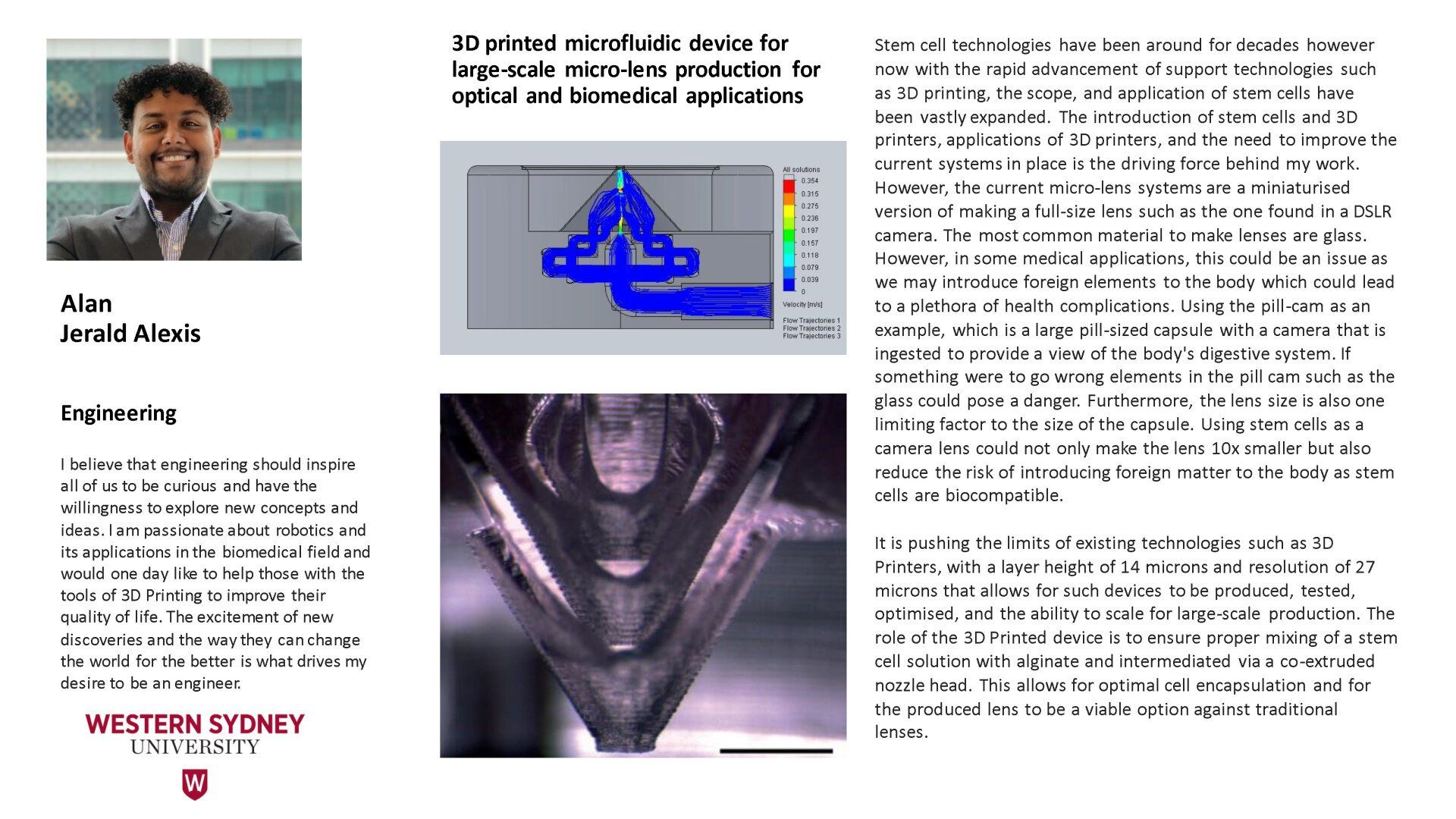
Alan Jerald Alexis
I believe that engineering should inspire all of us to be curious and have the willingness to explore new concepts and ideas. I am passionate about robotics and its applications in the biomedical field and would one day like to help those with the tools of 3D Printing to improve their quality of life. The excitement of new discoveries and the way they can change the world for the better is what drives my desire to be an engineer.
3D printed microfluidic device for large-scale micro-lens production for optical and biomedical applications
Stem cell technologies have been around for decades however now with the rapid advancement of support technologies such as 3D printing, the scope, and application of stem cells have been vastly expanded. The introduction of stem cells and 3D printers, applications of 3D printers, and the need to improve the current systems in place is the driving force behind my work. However, the current micro-lens systems are a miniaturised version of making a full-size lens such as the one found in a DSLR camera. The most common material to make lenses are glass. However, in some medical applications, this could be an issue as we may introduce foreign elements to the body which could lead to a plethora of health complications. Using the pill-cam as an example, which is a large pill-sized capsule with a camera that is ingested to provide a view of the body's digestive system. If something were to go wrong elements in the pill cam such as the glass could pose a serious danger. Furthermore, the lens size is also one limiting factor to the size of the capsule. Using stem cells as a camera lens could not only make the lens 10x smaller but also reduce the risk of introducing foreign matter to the body as stem cells are biocompatible. It is pushing the limits of existing technologies such as 3D Printers, with a layer height of 14 microns and resolution of 27 microns that allows for such devices to be produced, tested, optimised, and the ability to scale for large-scale production. The role of the 3D Printed device is to ensure proper mixing of a stem cell solution with alginate and intermediated via a co-extruded nozzle head. This allows for optimal cell encapsulation and for the produced lens to be a viable option against traditional lenses.

